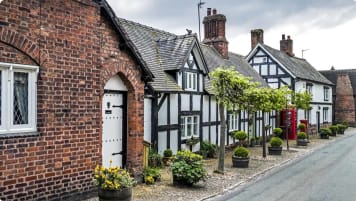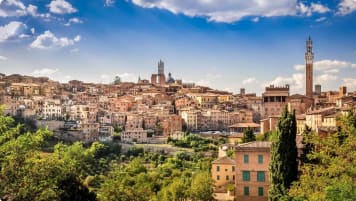The Sicilians and their Kings
The Sicilians and their Kings While popular images of Sicily might focus on the active volcano, Mount Etna, or the poverty that led to the mass migration of Sicilians to America, forming today’s communities of…
7 Nov 19 · 9 mins read
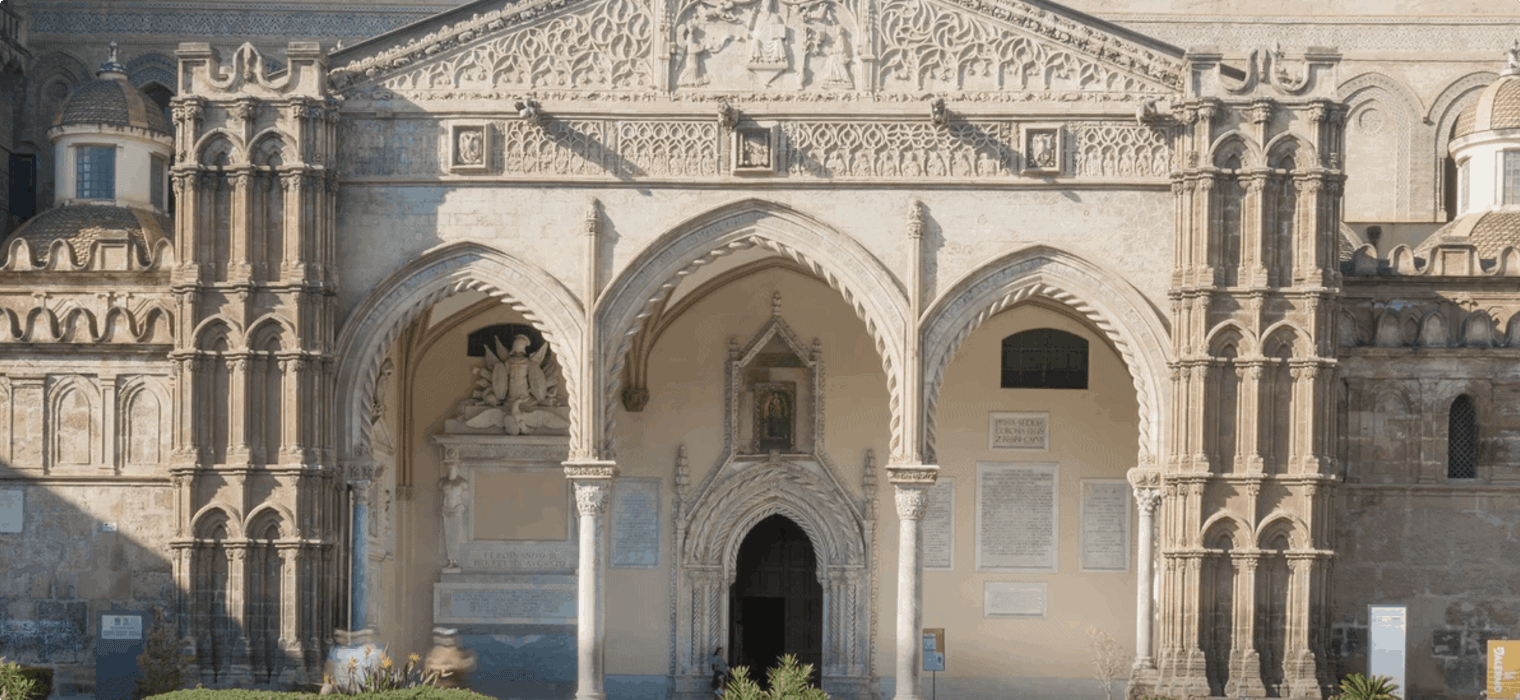
The Sicilians and their Kings
While popular images of Sicily might focus on the active volcano, Mount Etna, or the poverty that led to the mass migration of Sicilians to America, forming today’s communities of Sicilian Americans, the island of Sicily has a little-known but fascinating history. Located in the centre of the Mediterranean, between the Italian Peninsula and North Africa, Sicily has long been a crossroads between civilisations.
In this article we will focus on one particular period that exemplifies this cosmopolitan history: the Norman kingdoms of the Middle Ages.
This article is written as a backgrounder for our small group tours. On our tour of Southern Italy, we traverse the lesser known islands and southern regions of the country. Head further south from Rome into the region called “Southern Italy” and the crowds will begin to thin and life will start to move at a slower pace. Here you will see the cave dwellings of Matera; the ruins of Pompeii; Mount Vesuvius, the only active volcano in mainland Europe; and the gorgeous Amalfi Coast. We go beyond the typical Southern Italy itinerary on our trip. During our educational tour, you will witness the dramatic, rugged countryside of the lower part of Italy’s “boot” as we explore the ancient ruins, unique treasures, and diversity of Southern Italy. We learn about the influence of the early Phoenicians, Greeks, Romans, Byzantines, Saracens, Normans, Angevins and Aragonese while we search for evidence of their colonisation. We will also go on a cities tour and enjoy wine-tasting and a sampling of Southern Italian cuisine.
This tour includes exploration of the Aeolian Islands, steeped in antiquity and scattered like a string of pearls in the Tyrrhenian Sea, and beautiful historic sites such as the 12th century mosaics in the cathedral of Monreale, and take in the Norman Capella Palatina in Palermo, with its Byzantine artistry. We will stroll through old villages whilst enjoying the charming sea view and learning more about Sicily’s colourful history.
Sicilian people have the oldest royal residence in Europe
In the early eleventh century, a band of Norman adventurers rode from Normandy, in northern France, to southern Italy. Led by Roger d’Hauteville and his brother, Robert Guiscard, they intended to wrest the region from the Byzantine Greeks and the Muslims. By 1072, only six years after their compatriot, William, had conquered England at the Battle of Hastings, Roger became Count. Later, he was Roger I, King of Sicily.
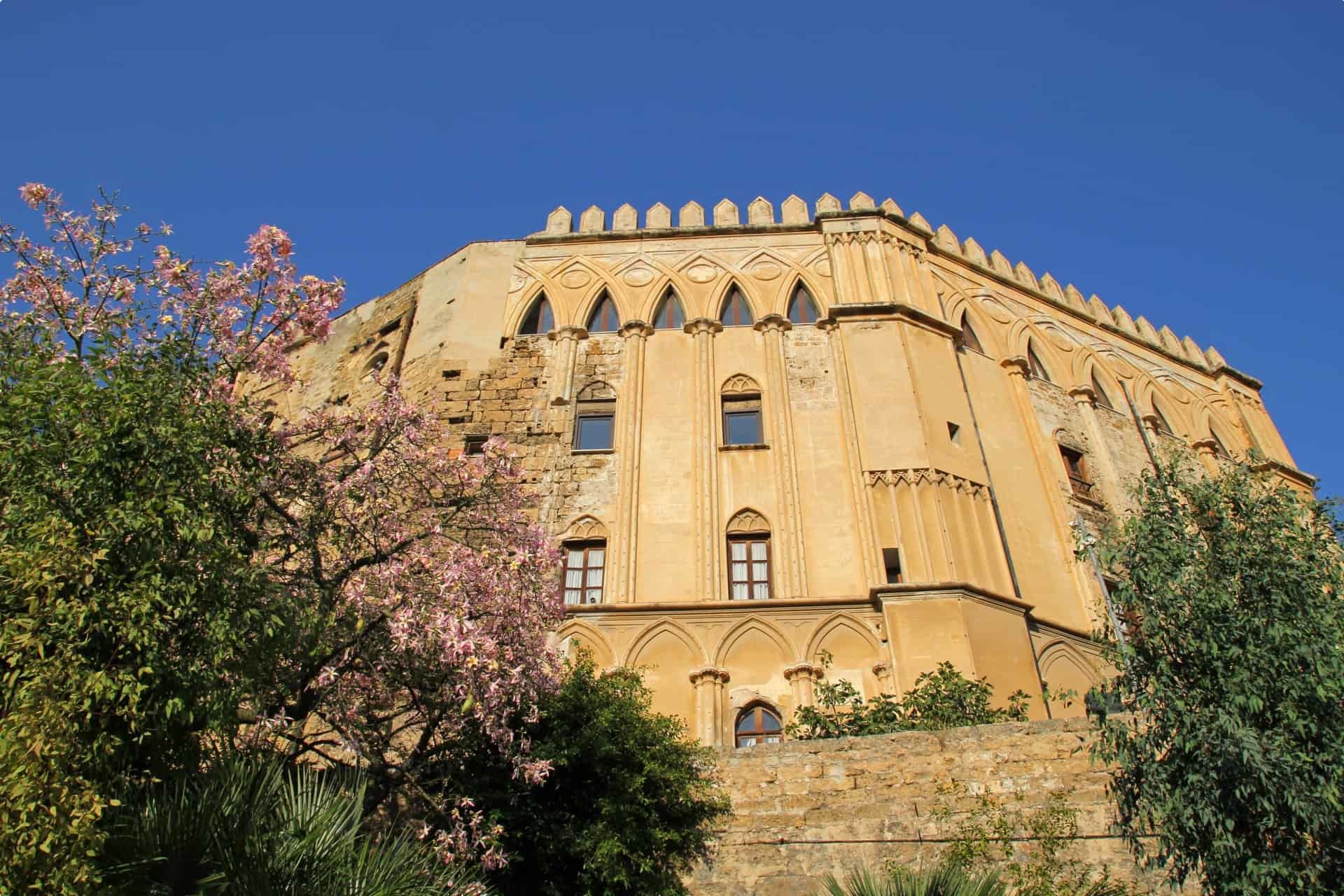
During his 30 year reign, Roger I enlarged the existing Arab fortress at the Sicilian capital, Palermo. This was itself built on the ruins of a stronghold dating back to the Roman Empire that had been used in the first Punic War. Now known as the Palazzo dei Normanni, it is the oldest royal residence in Europe. The Palazzo’s original chapel, built and consecrated in the last years of the eleventh century, became the crypt of a new chapel built by Roger’s successor, King Roger II, in 1132. Known as the Cappella Palatina, it’s one of the highlights of any visit to Palermo today. So too is La Martorana, built by Roger II’s Greek admiral and principal minister, George of Antioch. Monreale Cathedral, built by Roger’s grandson and successor, William II, is another famous cathedral founded by these Norman kings.
All three feature the exotic hybrid of artistic influences developed in twelfth century Sicily, and all three are visited on Odyssey’s small group tour of Malta, Sicily, Sardinia and Corsica. Yet while the design and decoration of the Cappella Palatina, La Martorana, and Monreale Cathedral reflect the diversity of the peoples of Sicily, they also reveal the kings’ desire to rival the Byzantine emperors, and to maintain strong French connections.
Sicilian power and glory in glittering mosaic
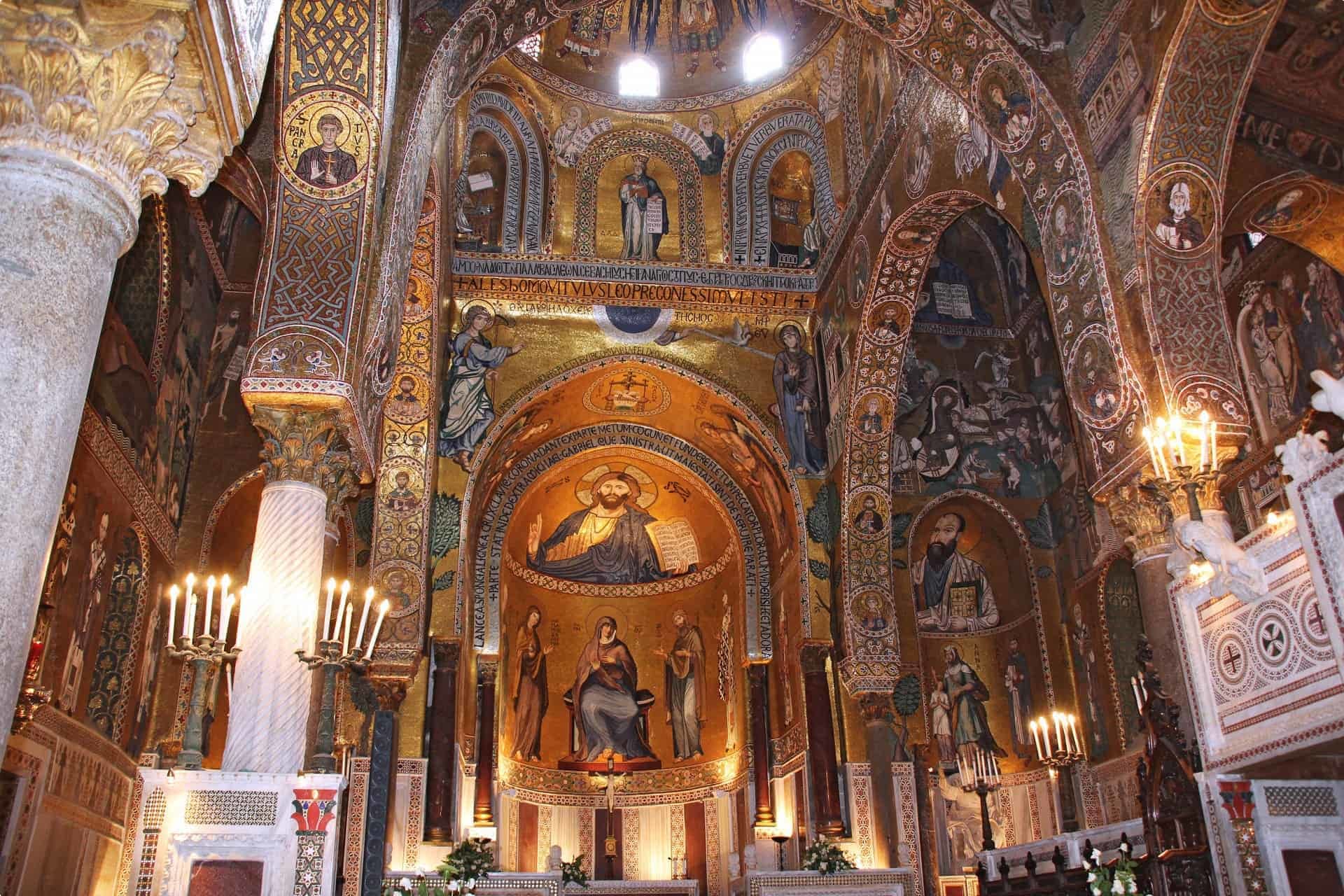
Roger II was crowned King of Sicily by the ‘Antipope’, Anacletus II, in return for support during the papal schism. Yet he was not born to ‘the purple’. His court reflected the diverse ethnic groups who lived in Sicily, with Normans, Greeks, Italians, Jews and North Africans all contributing to the intellectual ferment of his reign. Educated by Greek and Arab tutors, his court boasted some of the finest minds of the Middle Ages. Under his leadership, Sicily became a leading maritime power in the Mediterranean, and one of the best-governed states in Europe. Roger himself was depicted as a Latin king, in imperial Byzantine robes, and as an Islamic sultan. The cultural climate of his court is seen in the variety of artistic styles used in the decoration of his palace chapel, the Cappella Palatina.
The Cappella Palatina, palace chapel.
Originally isolated from the larger Palazzo complex, the Cappella Palatina was accessed via a narthex (lobby area). This lead into a Norman style wooden roofed basilica hall at the western end. A fully vaulted domed church with three apses was at the eastern end. It was completed with a Byzantine cupola. Pointed arches are set on ten Sicilian marble columns, and the ceiling is Islamic in style. The decoration of the interiors combined the talents of artists working in a riotous fusion of Byzantine, Islamic, Latin, Jewish, Lombard and French artistic traditions.
Learn about the exquisite mosaics: Cappella’s dome
The richly coloured mosaics within the Cappella Palatina are the most celebrated of its features. Created by Greek artists, they follow Middle Byzantine themes closely in the dome and drum. Here, Christ Pantocrator (Christ shown as ruler or sustainer of the world) is the main image. This iconography is commonly found in Orthodox Christian churches. It depicts Christ holding up his right hand in blessing (or teaching), while the left holds a copy of the Gospels. In the Cappella’s dome, the scene is set against a glittering gold background, enclosed in a ring with a Greek quotation from Isaiah. A surrounding band features four archangels and four angels, while the spandrels, niches and squinches of the dome are decorated with prophets and evangelists, all rendered in exquisite mosaic.

Depictions of Christ in the Chapel
Although the area below the dome follows the Byzantine convention by depicting scenes from the life of Christ, the rest of the Capella’s decoration differs significantly. Rather than the usual depiction of the Passion cycle (events from the last days of Christ’s life), honoured positions are instead given to the Annunciation, Presentation in the Temple, the Flight into Egypt and the Entry into Jerusalem. In the latter two, Christ is depicted in the role of a triumphant ruler, suggesting the decoration of the palace chapel was deliberately chosen to reflect Roger II’s power and glory.
The patron saint of France is on display
The king’s French connections are also on vivid display in the Cappella. On either side of the Entry into Jersualem stand two saints with strong ties to France. They are St Denis, first bishop of Paris, and St Martin, a famous bishop of Tours. Both are traditional patrons of the French king and the army, and at the time the Cappella was decorated, St Denis was the patron saint of both France and Paris. Martyred by decapitation, he picked up his head and walked several miles preaching a sermon on repentance. A carving of the saint, shown holding his head, can also be seen above the left portal of the entry to Notre Dame in Paris, where Odyssey’s small group tour of the Western Mediterranean islands ends.
Sicilian people; Here I am, your King …
The church of Santa Maria dell’Ammiraglio is more commonly called La Martorana. It features mosaics equally spectacular to those in the Cappella Palatina. Perhaps the best known is that of Roger II being crowned King of Sicily by Christ. Its an outstanding example of the art produced during the Norman rule of Sicily. Furthermore, the mosaic makes a strong political statement regarding Roger II’s right to rule. Christ is shown with his head turned towards Roger, his right hand extended to place the crown on the king’s head. Roger, head bowed and hands in a gesture of prayer, looks directly at the viewer. Its as if to say Here I am, your King, anointed by Christ himself. He is dressed in the vestments of a Byzantine emperor. This includes a loros, the long ceremonial stole of the Byzantine emperors. This embroidered and jewelled cloth is draped over the shoulders.
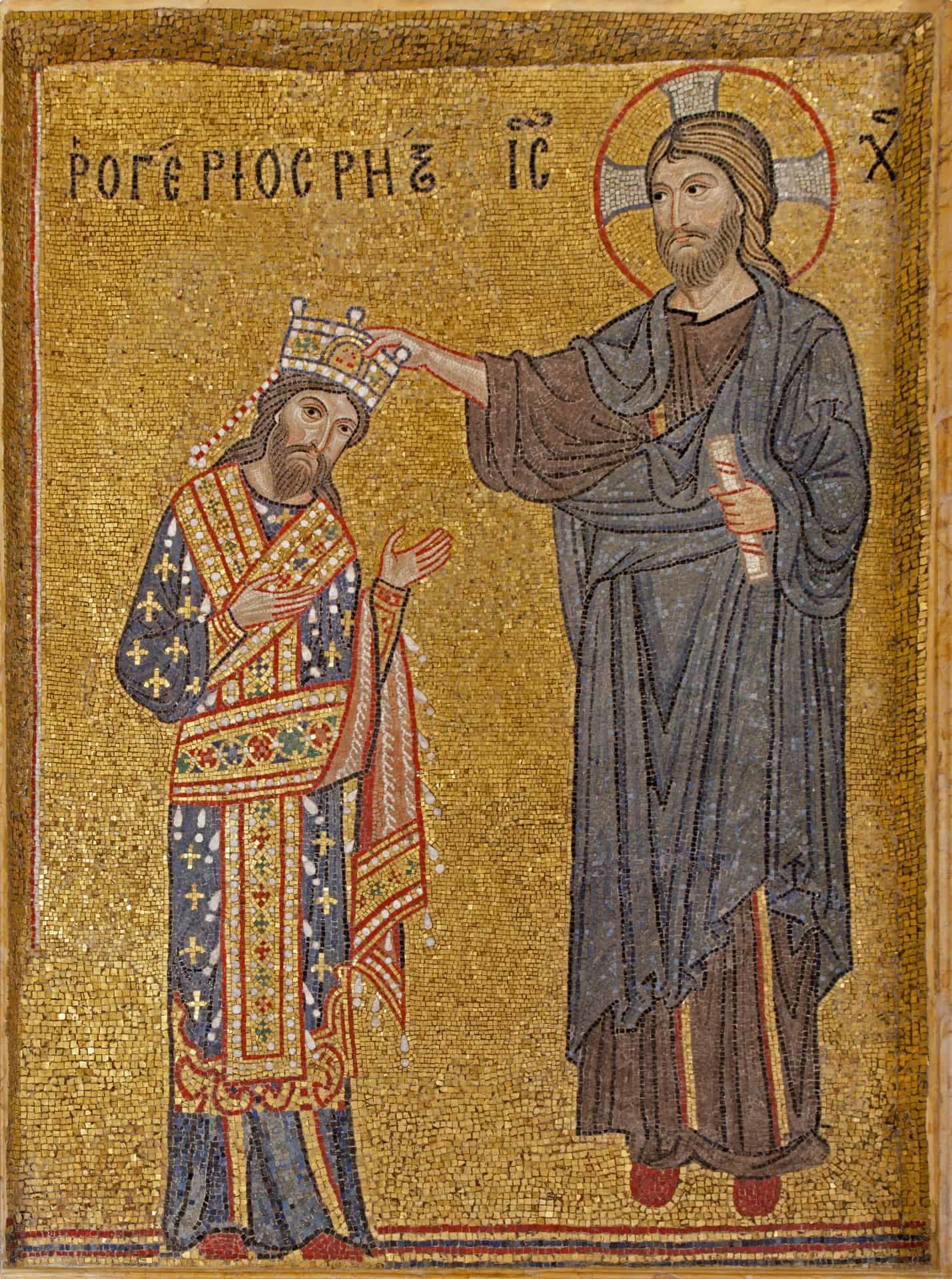
Sicily & French connections
Despite the emulation of the powerful Byzantine emperors, Roger II’s foreign policy was clearly oriented towards strengthening ties with France. In the 1140s, when La Martorana was being decorated, Louis VII was planning the Second Crusade to the Holy Lands. Roger II sent messengers to Louis. He offered support in the form of ships, provisions and the participation of either himself or his son. (Louis ultimately chose the overland route to the Holy Lands). Roger further aligned himself with the Capetian kings of France, by including the fleur-de-lys motif on his robe. This motif became more frequent during the reign of Louis VII as a French royal heraldic image. Roger’s second and third wives, and the intended wife of his heir, were also either French themselves, or had connections to important French families abroad.
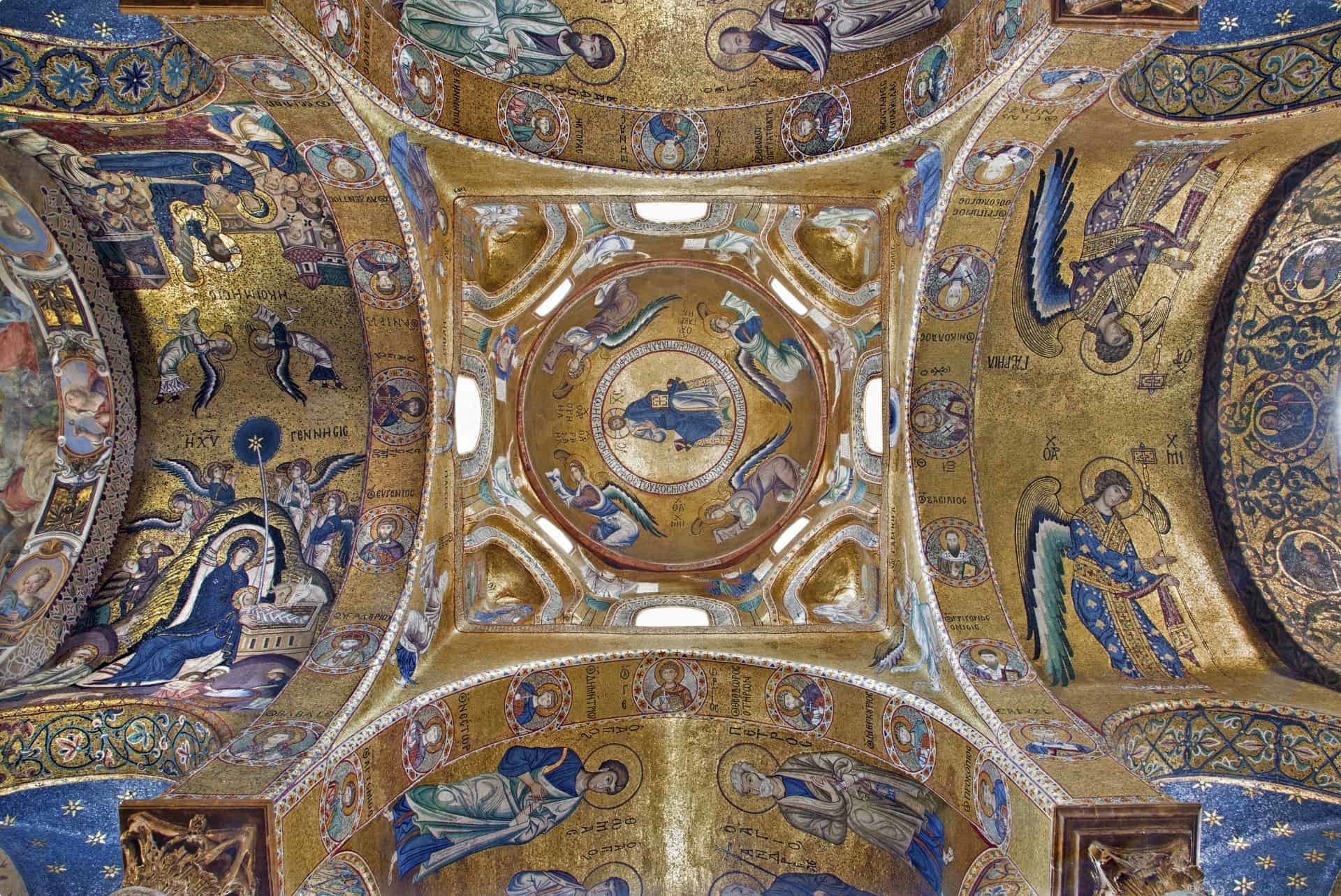
‘Unnatural centaurs, creatures part man and part beast’
Roger II was not the only ruler of the Sicilian people to align himself with the power and glory of the church through the decoration of religious buildings. Monreale Cathedral, founded by his grandson, William II, also features royal images glorifying the king. The first is found above the royal throne, and echoes that of his grandfather in La Martorana. Another glittering mosaic, it also shows Christ crowning William II as the new King of Sicily. In another scene directly opposite, William is shown presenting the completed cathedral to the Virgin Mary. A third royal image at Monreale is a sculptured one. It again shows William II presenting the cathedral to the Virgin Mary. This time, in an echo of the Adoration of the Magi, the Virgin has the Christ child seated on her lap.
The use of a familiar religious scene to depict an important political or social event is typical of Norman Romanesque art, although executed in Byzantine mosaic. However, the placement of the Cathedral’s mosaic scenes in unbroken friezes is not a Byzantine practice. Furthermore, all the inscriptions are in Latin rather than Greek.
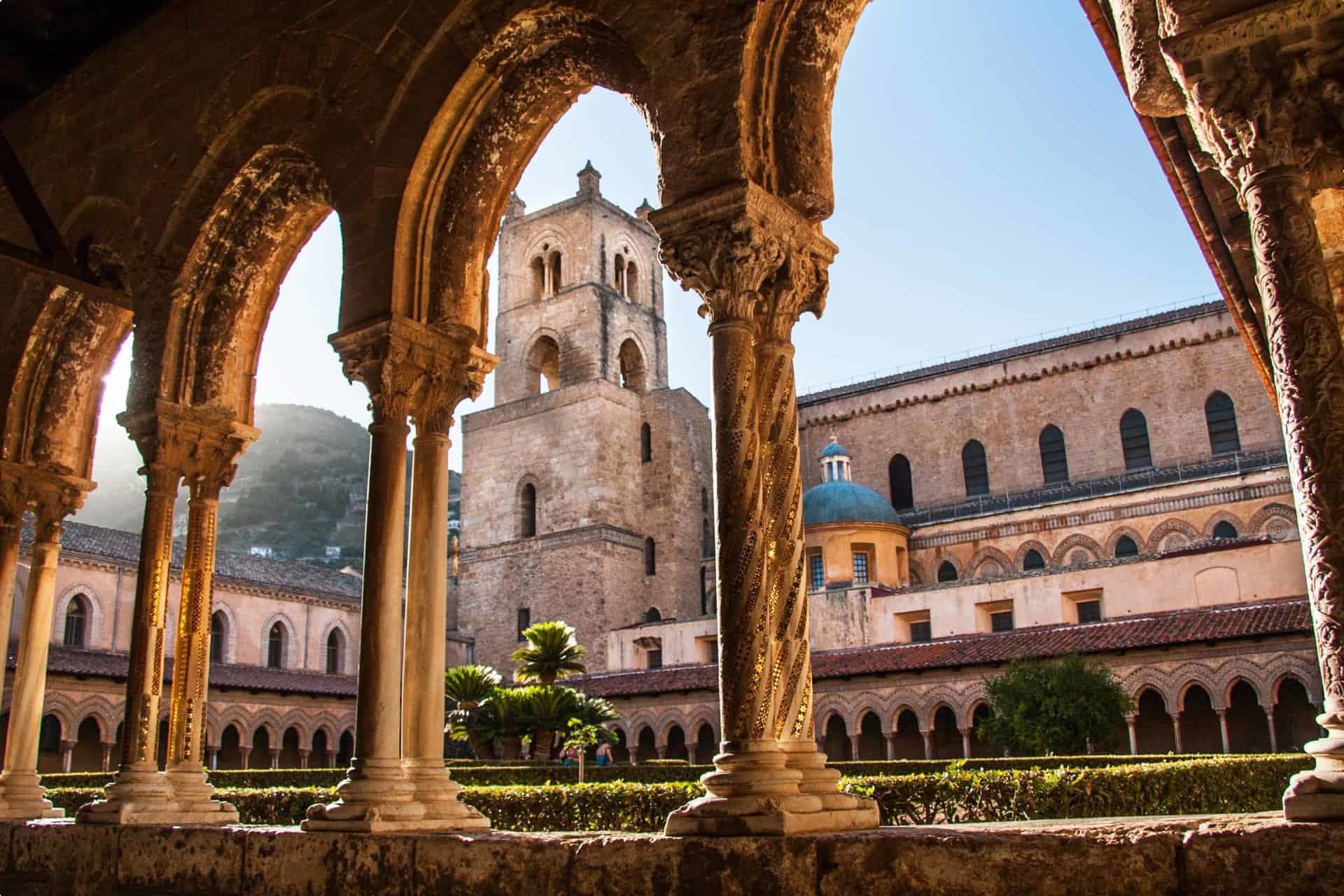
The role of art in the churches in Sicily
Sicily’s cultural diversity is further exemplified at Monreale Cathedral by the cathedral’s cloister capitals, which are predominantly Romanesque in style. Yet as well as classical motifs, the sculptors incorporated and transformed other elements. Byzantine, Arabic and northern French designs appeared side by side. Other scenes on the cloister’s capitals feature imagery that St Bernard of Clairvaux, the influential Cistercian monk and mystic, would most definitely have disapproved of. In 1125, St Bernard famously described the decoration of cloister capitals, such as those at Monreale, as a ‘ridiculous monstrosity’. He thought them a spiritual distraction, being full of images unsuited to a monastery. These include typically Romanesque scenes of duels between men, beasts, or both. Unsuitable too were the ‘obscene monkeys, savage lions, unnatural centaurs, creatures part man and part beast, striped tigers, fighting knights, or hunters sounding their horns.’
St Bernard’s opinion was at the heart of the contemporary debate over what exactly the role of art in churches was. Yet this interchange of Western, Islamic and Byzantine artistic elements at the courts of twelfth century Sicily, tempered with local influences, fostered the growth of a style that spread widely throughout the medieval Mediterranean region.
Legacies of the Norman kingdom
Though the Norman reign in Sicily came to an end in 1302, when the island was incorporated into the Spanish kingdom. The island was long neglected by the Spanish, leading to a wealth gap between Sicily and mainland Italy that, though much improved, remains today.
Yet the legacies of Norman rule remain. Sicily is different from mainland Italy, even Southern Italian culture. Folk memory holds that Sicilians with blue eyes and blonde hair are descendants of the Norman kings. Sicilians continue to speak the Sicilian language – classified as different enough from regular Italian to constitute a language in its own right, rather than a dialect – which contains liberal borrowings from Arabic, French and Old Norman.
Odyssey small group tours to Sicily and the Western Mediterranean
The architectural and artistic treasures found in Arab-Norman Palermo, the capital of Sicily, are just one of the many highlights of Odyssey’s small group tour to the western Mediterranean. Beginning in Malta, our small group tour heads to Sicily, Sardinia, and Corsica, and finishes in Paris. Our fully escorted tour offers extraordinary insights into the history and culture of these four unique islands that long held the keys to the Mediterranean itself. To see the full itinerary for our forthcoming tours of Malta, Sicily, Sardinia and Corsica, click here.
For more information about Sicily, we encourage you to read our other articles:
- Early History of Sicily: From the Phoenicians to the Arab Conquest
- Malta, Sardinia, Sicily and Corsica: An Educational Journey Through the Western Mediterranean
- Southern Italy: from Magna Graecia to Italian Unification.
Odyssey small group tours to Sicily and the Western Mediterranean
The architectural and artistic treasures found in Arab-Norman Palermo, the capital of Sicily, are just one of the many highlights of Odyssey’s small group tour to the western Mediterranean. Beginning in Malta, our small group tour heads to Sicily, Sardinia, and Corsica, and finishes in Paris. Our fully escorted tour offers extraordinary sights into the history and culture of these four unique islands that long held the keys to the Mediterranean itself. To see the full itinerary for our forthcoming tours of Malta, Sicily, Sardinia and Corsica, click here.
Originally published on December 18, 2017
Updated November 8, 2019.
Related Tours
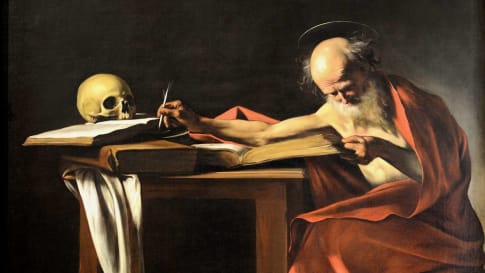
20 days
May, OctCaravaggio’s Journey | Small Group Tour in Italy
Visiting Italy, Malta
On this small group tour of Italy and Malta for mature and senior couples and solo travellers we trace the life of Caravaggio, exploring the artistic works he left behind and the tumultuous life he led. We follow him from his birthplace in Milan to Rome, Malta, Sicily and Naples. In each place he lived Caravaggio left behind a rich legacy of art for us to admire.
From A$15,125 AUD
View Tour
22 days
Mar, Sep, MayFlorence: Living in a Renaissance City
Visiting Italy
A small group tour with like minded people, couples or solo travellers, that is based in Florence. An authentic experience of living in this Renaissance city The daily itineraries draw on local guides to share their knowledge on this unique European tour. Trips to Pisa, Lucca and Perugia are included.
From A$13,695 AUD
View Tour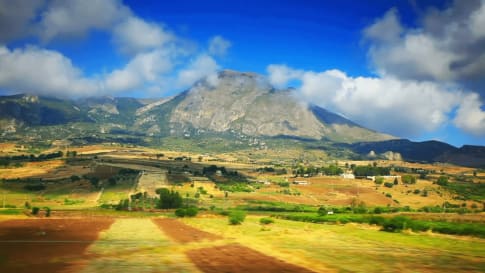
25 days
Apr, Sep, OctMediterranean Islands Small Group Tour | Malta, Sicily, Sardinia and Corsica
Visiting Corsica, Italy
For centuries Malta, Sicily, Sardinia and Corsica held the key to the Mediterranean. Unlike other European tour companies, Odyssey provides a tour leader and local guides to share detailed itineraries about the destinations on these small group journeys. This escorted tour of western Mediterranean explores the geography, history, culture and peoples of these 4 islands. Small group tour for mature couples and solo travellers. A reasonable single supplement is charged.
From A$19,750 AUD
View Tour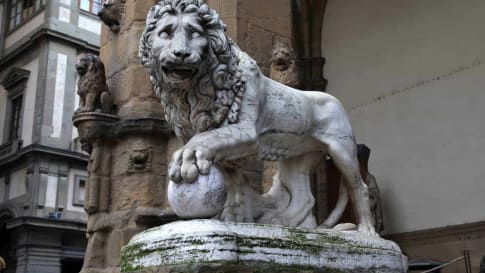
21 days
Apr, Aug, MayRenaissance Italy Tour: Story of Five Families
Visiting Italy
Explore Renaissance Italy on this small group tour though an examination of five significant city states. Florence, Urbino, Ferrara, Mantua and Milan were all dominated by families determined to increase the status of their city through art and architecture. Spend time coming to know the men and women who helped create the cities, as well as the magnificent legacy they left behind.
From A$14,295 AUD
View Tour
